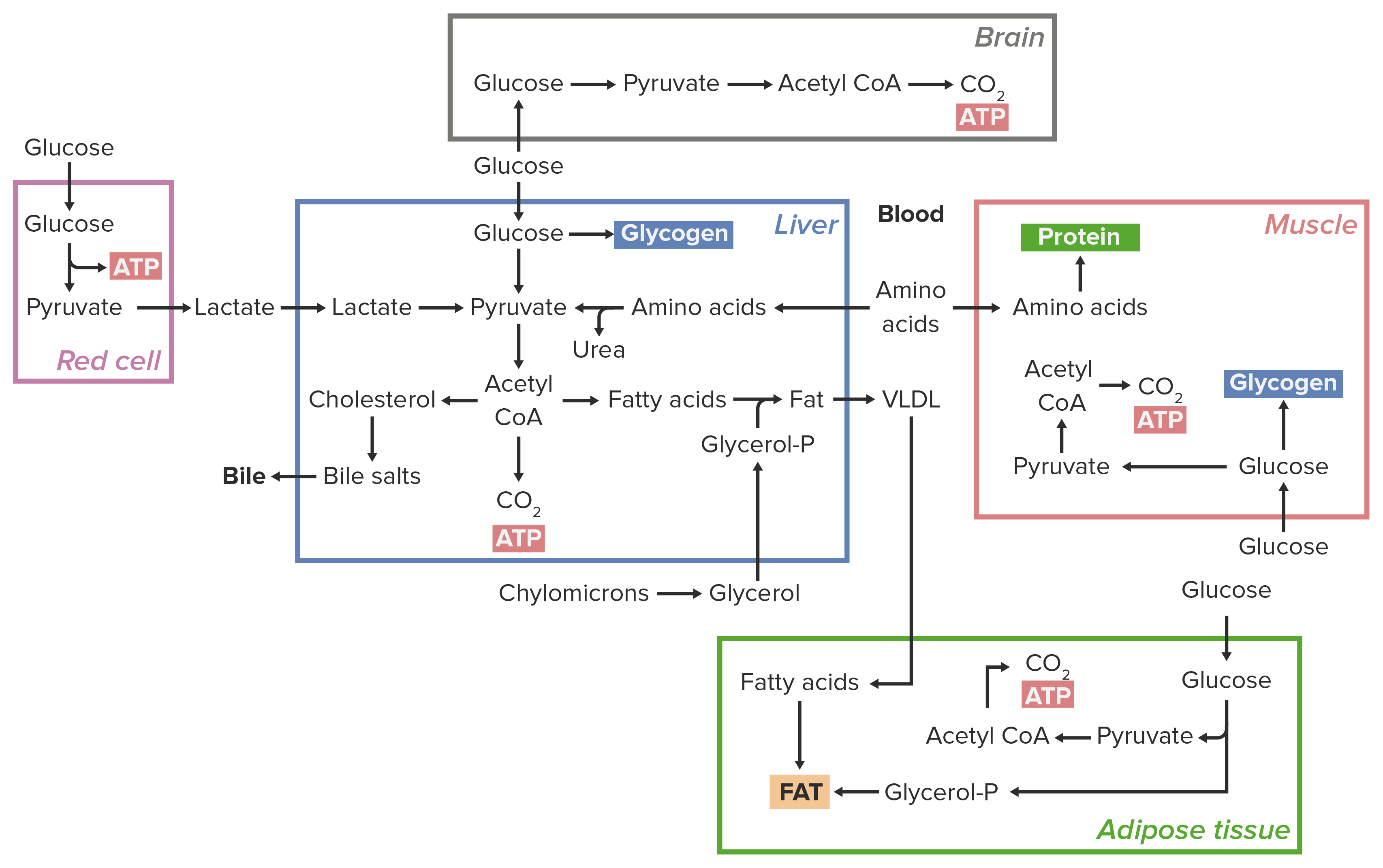Playlist
Show Playlist
Hide Playlist
Metabolic Pathways
-
Slides 18 RegulationOfCellRespiration CellBiology.pdf
-
Reference List Molecular and Cell Biology.pdf
-
Download Lecture Overview
00:00 Acetyl CoA though, we can see is at the center of it regardless of what we are metabolizing. 00:08 So straight up glucose, we end up with Acetyl CoA. Fatty acids, the fatty acid tails come in as Acetyl CoA. 00:16 And then even portions of proteins will come in as Acetyl CoA. So Acetyl CoA is a pivotal molecule in the whole process of cell respiration no matter which fuels we metabolize. 00:29 Before we move on, I want to remind you of the idea that cellular mechanisms go both in a forward direction and in a backward direction. So we can build things and we can break them down. So the process of anabolism is building things. So anabolic steroids means building muscles. And then catabolism is breaking things down. 00:54 So whether we are considering glucose or fats or proteins, all of these pathways go in both directions. 01:02 So looking at glucose pathways first, we could either be breaking down glucose in the process of glycolysis, or we could be making glucose in the process of gluconeogenesis. 01:18 So, on the other hand if we want to take glucose and store it in the form of glycogen, we would have glycogenesis. 01:26 So that is the packing of glucose together, storage molecule of glycogen, but when we are short on blood sugar and we need to have sugar for fuel, we will have glycogenolysis or the breaking down of glycogens. 01:41 So glycogen lysis to break glycogen and to form glucose and it can go all the way through and make tons and tons of ATP. 01:50 Either way, the central unit here is going to be Acetyl CoA. Similar processes occur when we consider the breakdown, catabolism or buildup anabolism of fatty acids. Bi-directional, so we can store them or we can break them down and use them. 02:09 And everything in the system is always influx. So, if we need a lot of fuel, we need to make more ATP, then fatty acids will be catabolised and broken down and enter as Acetyl CoA. So the common theme here I think you see is Acetyl CoA as a pivotal molecule. When we look at proteins, we can have protein catabolism, protein anabolism but, in general not such an easy pathway to get into because there are so many different places for entry but we still have the possibility to use proteins as fuel and some of them will come in as Acetyl CoA. 02:49 Many others as we saw will come in at different places throughout the Krebs cycle or even in through the breakdown of pyruvate and pyruvate oxidation. 03:01 So in general, you see the scheme here is that all of these fuels that we consume can enter the cellular respiration process and be used as fuels. Again primarily we will use glucose. Other sugars can enter this pathway through simple modifications and then we'll use fats which have high energy yields but require the use of oxygen. 03:26 So we cannot breakdown fats until we have oxygen present because you can see where they come into the scheme of things, below glycolysis we need oxygen to breakdown fatty acids. 03:39 So now that we have a good idea of how each of the types of fuel we consume are broken down, let's look at how the process of metabolism can be controlled or regulated.
About the Lecture
The lecture Metabolic Pathways by Georgina Cornwall, PhD is from the course Energy, Enzymes and Metabolism.
Included Quiz Questions
Which of the following is the first step in amino acid catabolism?
- Deamination
- Dehydrogenation
- Decarboxylation
- Beta-oxidation
- Acetylation
Which of the following terms indicates the catabolism of glucose?
- Glycolysis
- Gluconeogenesis
- Glycogenesis
- Beta-oxidation
- Glycogenolysis
Customer reviews
5,0 of 5 stars
| 5 Stars |
|
5 |
| 4 Stars |
|
0 |
| 3 Stars |
|
0 |
| 2 Stars |
|
0 |
| 1 Star |
|
0 |




